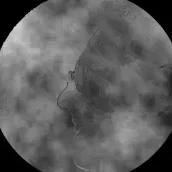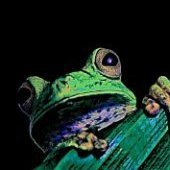-
Posts
9,959 -
Joined
-
Last visited
Profile Information
-
Location
Hamburg - the best city of the world ;-)
-
Interests
Collecting photons, filtering the best ones and polishing until they shine.
-
Member Title
Photon collector
Recent Profile Visitors
The recent visitors block is disabled and is not being shown to other users.
-
 NotMyFault reacted to a post in a topic:
Covex and concave mirror image
NotMyFault reacted to a post in a topic:
Covex and concave mirror image
-
 NotMyFault reacted to a post in a topic:
Covex and concave mirror image
NotMyFault reacted to a post in a topic:
Covex and concave mirror image
-

Tiff Compression when saving a scanned file
NotMyFault replied to Keve's topic in Desktop Questions (macOS and Windows)
Just export them from Photo into a new file, using the option „none“ for compression.- 5 replies
-
- tiff
- compression
-
(and 2 more)
Tagged with:
-
It is missing on iPad, like many other desktop features. https://affinity.help/photo2/en-US.lproj/pages/Raw/raw_panelOverlays.html https://affinity.help/photo/en-US.lproj/pages/Raw/raw_panelDetails.html
-
 Mark Freeman reacted to a post in a topic:
Images washed out on export to png/jpg (Designer iPad)
Mark Freeman reacted to a post in a topic:
Images washed out on export to png/jpg (Designer iPad)
-
 Mark Freeman reacted to a post in a topic:
Images washed out on export to png/jpg (Designer iPad)
Mark Freeman reacted to a post in a topic:
Images washed out on export to png/jpg (Designer iPad)
-

Images washed out on export to png/jpg (Designer iPad)
NotMyFault replied to Mark Freeman's topic in iPad Questions
My statement is correct for export persona and exporting slices from layers instead of manual made slices. -

Images washed out on export to png/jpg (Designer iPad)
NotMyFault replied to Mark Freeman's topic in iPad Questions
-

Images washed out on export to png/jpg (Designer iPad)
NotMyFault replied to Mark Freeman's topic in iPad Questions
Your comments are like your forum name, acid like https://en.wikipedia.org/wiki/Hydrochloric_acid. Probably this is intentional. I was a bit in a hurry (as I explained) and simply forget to explicitly mention the export persona (which was mentioned explicitly by the OP). Now added for clarity. I‘m sure you as infallible noticed the omission. see which links to a thread with many deleted comments from your account. -
 HCl reacted to a post in a topic:
Images washed out on export to png/jpg (Designer iPad)
HCl reacted to a post in a topic:
Images washed out on export to png/jpg (Designer iPad)
-

Images washed out on export to png/jpg (Designer iPad)
NotMyFault replied to Mark Freeman's topic in iPad Questions
I‘m traveling today and may be unable to answer in timely manner. -

Images washed out on export to png/jpg (Designer iPad)
NotMyFault replied to Mark Freeman's topic in iPad Questions
Next: the washed out cards are rendered washed out within the app out on my iPad. could there be any issues with color calibration on your pc or display? -

Images washed out on export to png/jpg (Designer iPad)
NotMyFault replied to Mark Freeman's topic in iPad Questions
First observation: if you export layers in export persona (like Artboards), any adjustment layers above in the layer stack get ignored(by design). This explains why it has no effect at export. -

Images washed out on export to png/jpg (Designer iPad)
NotMyFault replied to Mark Freeman's topic in iPad Questions
Color of what? the document itself the export UI for exported file in any case: did you choose identical settings for both, or is one of them different? if yes, please specify (or see and answer my question before) -

Images washed out on export to png/jpg (Designer iPad)
NotMyFault replied to Mark Freeman's topic in iPad Questions
There should be no color loss at export in the first place, and no need for compensation by curves adjustment. can you share: the afdesign file a screenshot of export settings used the exported png or jpg file?


